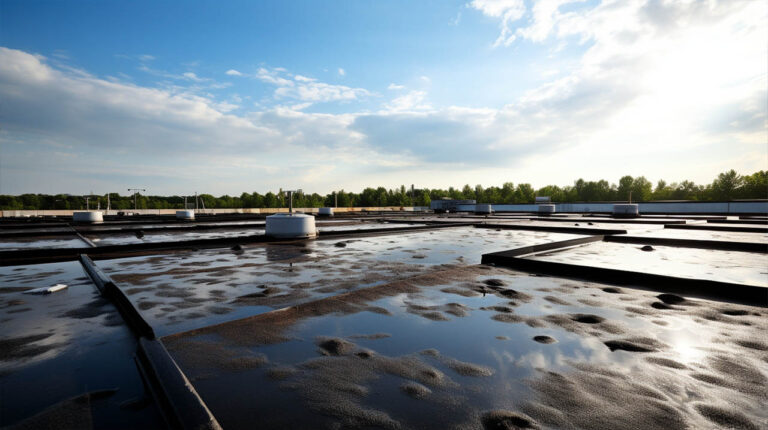Flat roofs are a popular choice for many buildings due to their aesthetic appeal and efficient use of space. However, like all roofing systems, they require regular inspection and maintenance to ensure their longevity and performance. At TecHero Roofing, we understand the intricacies of flat roofing systems and are here to guide you through the process of assessing the condition of your flat roof.
Identifying the Type of Flat Roof
The first step in assessing the condition of your flat roof is to determine its type. There are several types of flat roofs, each with its unique characteristics:
- Torch Down Roofs: These are characterized by a smooth, white surface with mineral grit. They are applied using a flaming torch and are known for their durability.
- Hot Tar Roofs: Similar to torch down roofs but with a gravel surface. They are applied using hot tar and are known for their robustness.
- Single-Ply Roofs: These are rubber or plastic roofs, gaining popularity due to their flexibility and lightweight nature. They are commonly referred to as TPO, though they were previously known as EPDM.
Signs of a Wearing Flat Roof
One of the most evident signs of a deteriorating flat roof is the shedding of granules. If you notice the black membrane starting to show through the mineral grit surface, it’s an indication that your roof might be nearing the end of its lifespan. While occasional shedding in specific areas might be due to foot traffic or proximity to drains, if this occurs extensively, it’s a sign to consider a roof replacement.
Buckles and Seams: Indicators of Installation Quality
Buckles on your flat roof can indicate poor installation, often resulting from installing a new roof over an old one without proper removal. It’s essential to inspect the seams of your roofing system. Properly installed roofs will display solid black lines, known as “bleed out,” along the entire length of all seams. This indicates the appropriate use of hot tar or sufficient heating of the torch roll.
Locating and Addressing Leaks
Leaks can be a significant concern for flat roofs. While finding the exact location of a leak can be challenging, some common areas are more prone to leakage:
- Drains: These are the most common areas for leaks. Ensure that scupper drains are sealed properly, especially where they penetrate external walls.
- Punctures and Loose Seams: These can be obvious sources of leaks. Addressing them promptly can prevent further damage.
For those with gravel roofs, detecting issues might be more challenging, and it’s advisable to consult a professional. On the other hand, single-ply roofs offer easier leak detection, and sealing can be done using exterior-grade white silicone or caulk.
TecHero Roofing: Your Partner in Roofing Excellence
At TecHero Roofing, we pride ourselves on our expertise and commitment to quality. Whether you’re looking for roof repair in Encino or seeking a trusted Encino roofer for a comprehensive inspection, we’re here to assist. With a reputation as one of the leading roofing companies in Encino, you can trust us to provide solutions tailored to your needs.
In conclusion
Regular inspection and maintenance are crucial for the longevity of your flat roof. By understanding the signs of wear and potential issues, you can take proactive measures to ensure the durability and performance of your roofing system.


